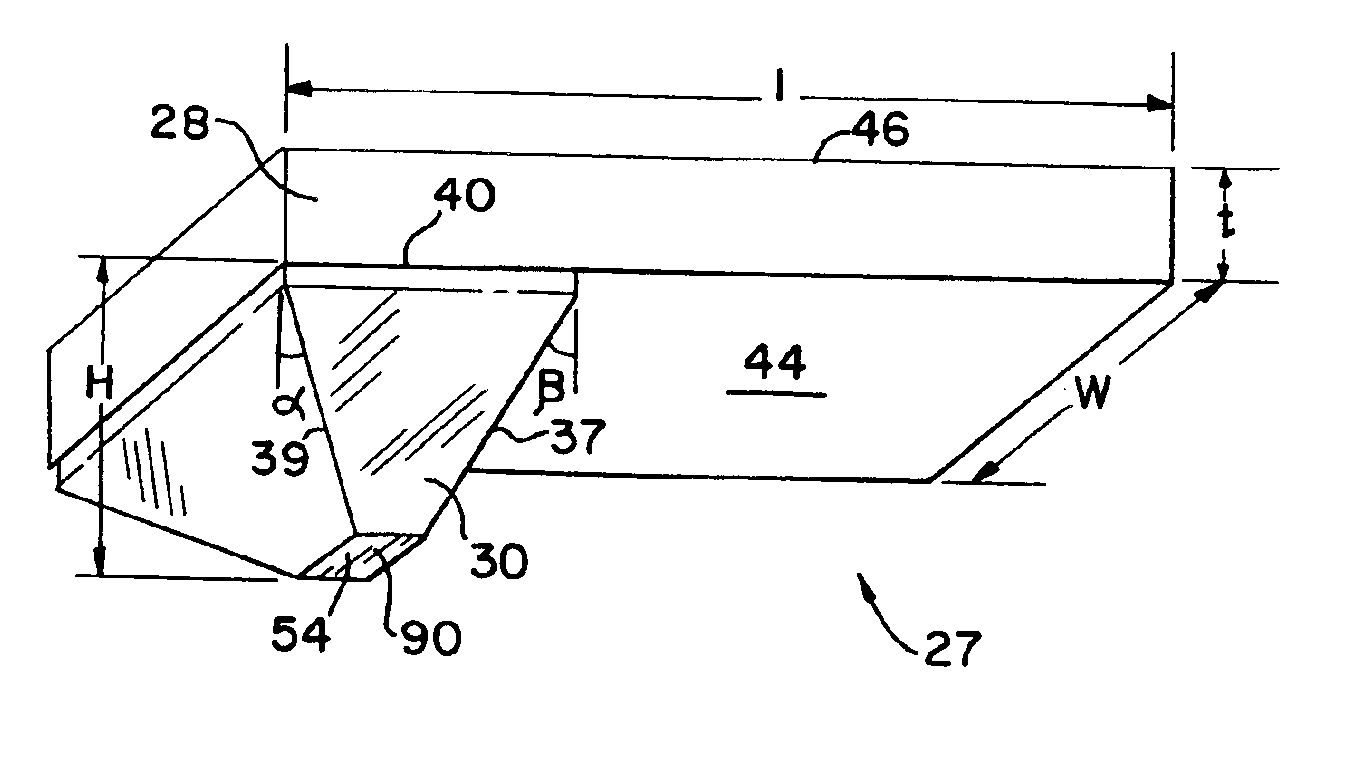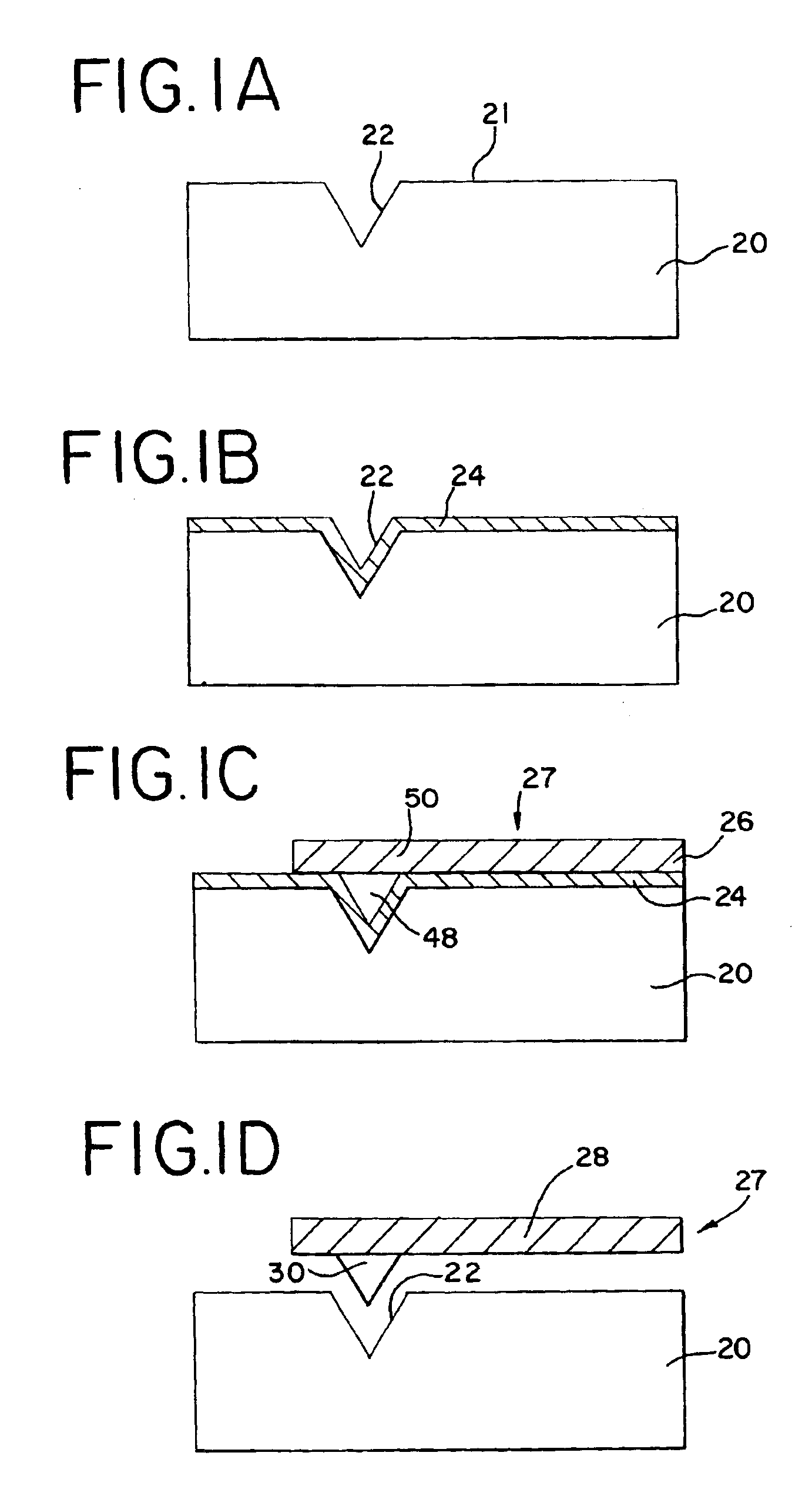Scanning probe microscopy probes and methods
a microscopy and scanning probe technology, applied in the field of scanning probe microscopy, can solve the problems of existing fabrication methods, sharp tips, and performance limiting devices of the scanning probe's cantilever beam with integrated tips
- Summary
- Abstract
- Description
- Claims
- Application Information
AI Technical Summary
Benefits of technology
Problems solved by technology
Method used
Image
Examples
example
[0058]The probe 227 was mounted and tested on a Thermomicroscopes AutoProbe® M5 atomic force microscope (AFM). An organic molecule, 1-octadecanethiol (ODT), was used for the fluid 60. ODT (98%) may be obtained from Aldrich Chemical Company (Milwaukee, Wis.). The substrate 62 was a silicon chip coated with a 5-nm-thick chrome layer for adhesion promotion, and a 30-nm-thick gold layers. Preferably, the substrate 62 is formed from a single crystal silicon wafers ({100} orientation), which may be obtained from International Wafer Service (Portola Valley, Calif.). Gold (99.99%) for the gold layers may be obtained from Pure Tech (Brewster, N.Y.). A chromium evaporation source (chrome plated tungsten rod) to form the chrome layer may be obtained from R. D. Mathis Company (Long Beach, Calif.). A contact inking method, as described in “Contact-Inking Stamps for Microcontact Printing of Alkanethiols on Gold”, by L. Libioulle, A. Bietsch, H. Schmid, B. Michel, and E Delamarche, Langmuir, 1999,...
PUM
| Property | Measurement | Unit |
|---|---|---|
| height | aaaaa | aaaaa |
| height | aaaaa | aaaaa |
| length | aaaaa | aaaaa |
Abstract
Description
Claims
Application Information
 Login to View More
Login to View More - R&D
- Intellectual Property
- Life Sciences
- Materials
- Tech Scout
- Unparalleled Data Quality
- Higher Quality Content
- 60% Fewer Hallucinations
Browse by: Latest US Patents, China's latest patents, Technical Efficacy Thesaurus, Application Domain, Technology Topic, Popular Technical Reports.
© 2025 PatSnap. All rights reserved.Legal|Privacy policy|Modern Slavery Act Transparency Statement|Sitemap|About US| Contact US: help@patsnap.com



